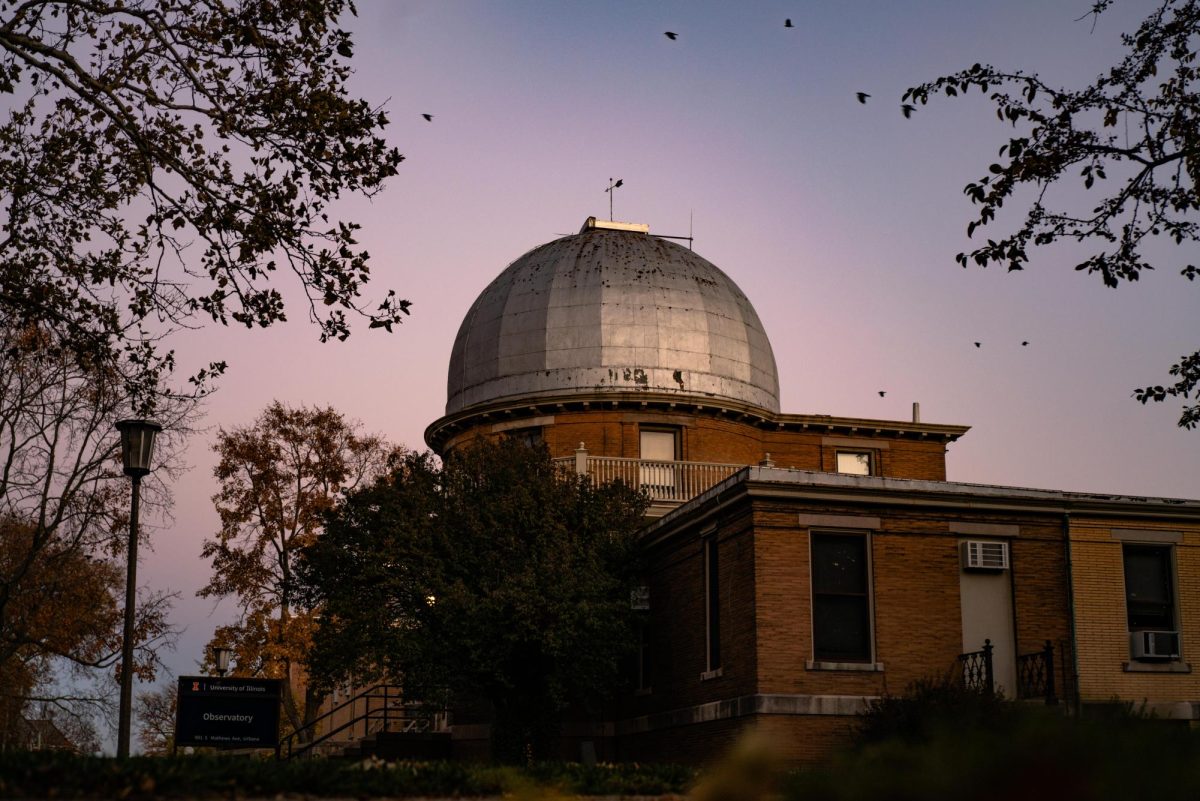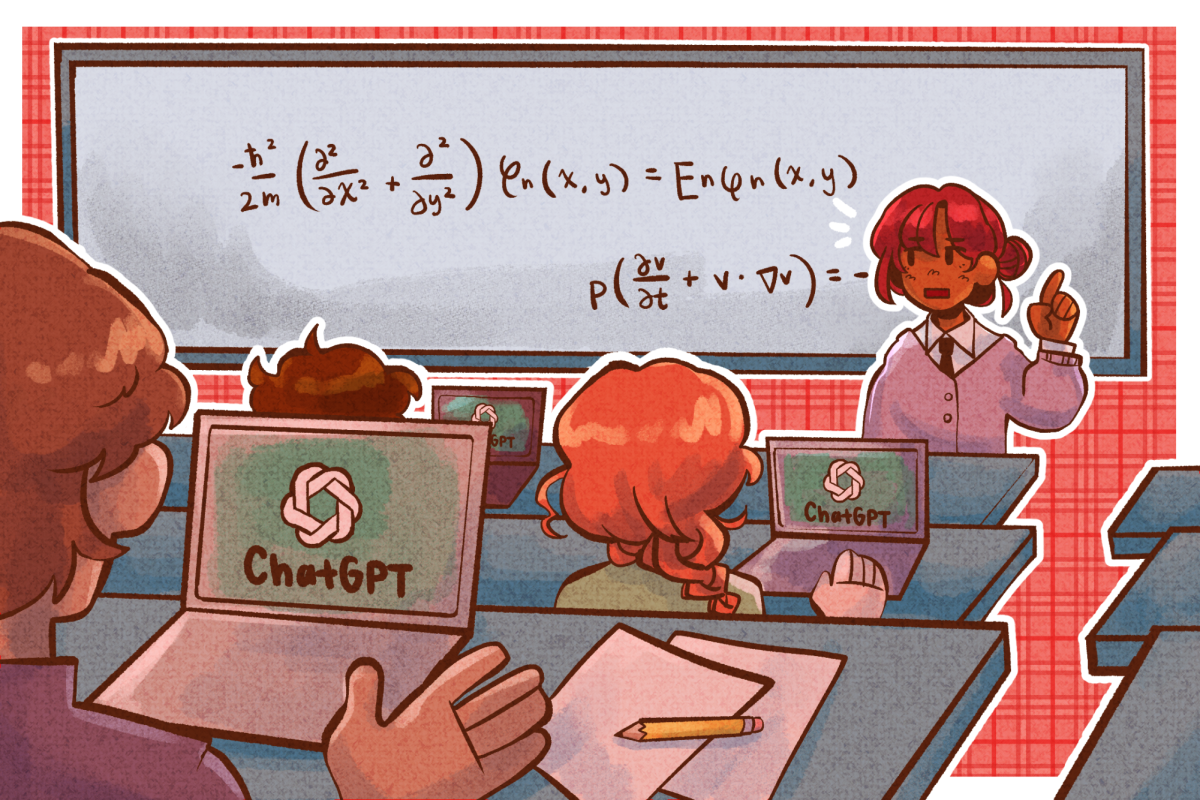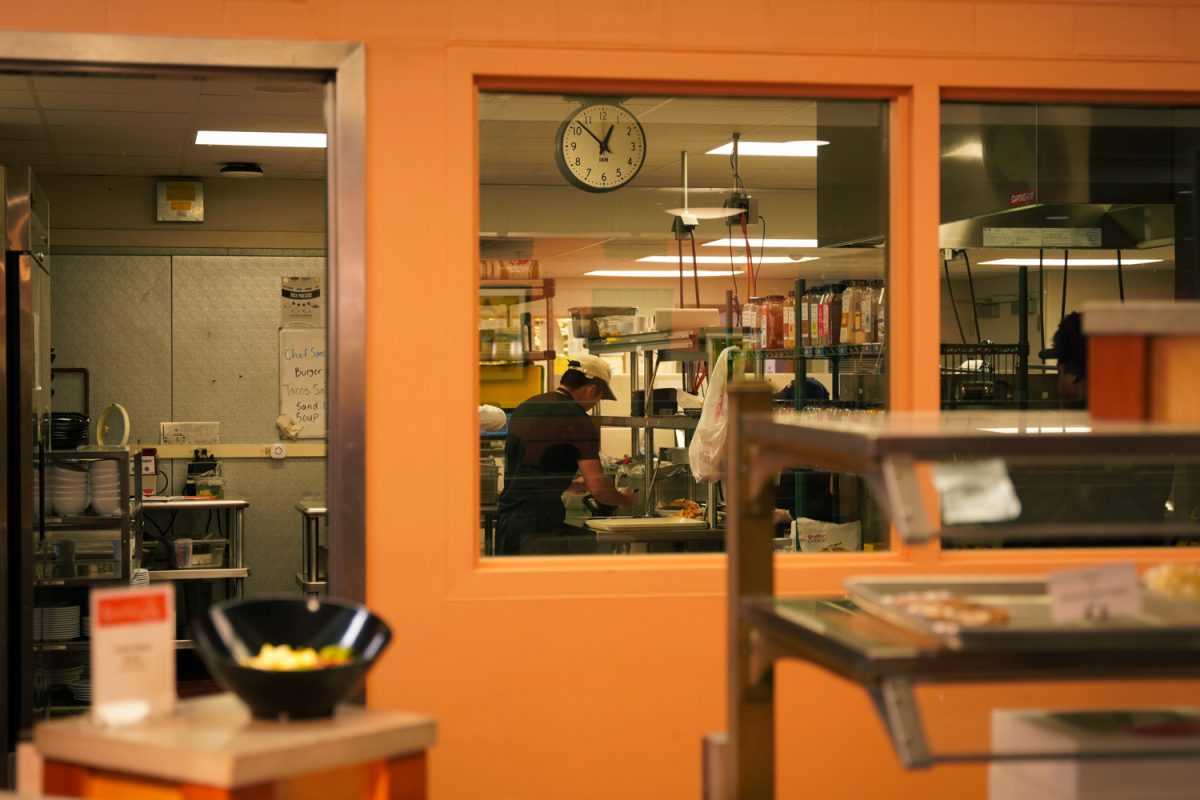The University of Illinois Astronomical Society gives students the opportunity to look at the solar system through open house events at the University of Illinois Observatory on the second Friday of every month.
Gazing at the stars through a 12” refracting telescope is free and open to the public. Brockton Stanley Brendal, graduate student studying physics, said people can clearly see components of space.
“They have the dome open with the telescope operational and, if it’s a really good night, they usually have it pointed at something like Saturn, a nebula or the galaxy,” Brendal said.
Brendal further elaborated that during the open house, the 12” refracting telescope moves within the building and newer, smaller telescopes are displayed on the lawn. These methods aim to give visitors a variety of sights to see.
While the telescope weighs about a half-ton, according to Brendal, and is close to touching the ceiling of the dome, it can easily be controlled by handles attached to the bottom of the tool. The telescope was built and installed in 1897 and has been in the observatory ever since.
Get The Daily Illini in your inbox!
The Observatory, located near Foellinger Auditorium and built in 1896, received its designation as a National Historic Landmark in 1990. According to the Department of Astronomy, the observatory “played a key role in the development of astronomy as it was home to a key innovation in the area of astronomical photometry.”
Charles Gammie, professor in Engineering, said a lot of what astronomers do is trying to understand new physics.
“Astronomy has this element of exploring new phenomena,” Gammie said. “We see new things happening in the sky all the time. So, in essence, astronomy is very exploratory when physics sometimes isn’t.”
Despite the faculty and resources within the astronomy field at the University, Gammie said the department faces geographic barriers in implementing astronomy.
“We don’t have the greatest sight for doing astronomy in the world because it’s a low elevation, and astronomers like to work on mountaintops,” Gammie said. “It’s also very bright because of all the campus lights which make it more difficult.”
However, the Department of Astronomy strives to make up for the shortcomings by creating an advanced facility.
“Because this is a national landmark, the government gave the university $500,000 to renovate the building, and the University matched that, so we have $1 million to renovate the building,” Brendal said.
The renovation is estimated to start next year, according to Brendal.
Brendal explained once students notice the opportunities the Observatory provides, the students end up appreciating the experience.
“They love it, every time someone comes in here and they haven’t seen it before,” Brendal said. “We are surprised a lot by how interested they are.”









